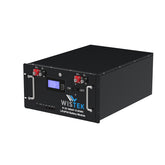Why 13 Volts Is Safe for a 12 Volt Battery
Many people get concerned when they measure their 12-volt battery and see a reading of 13 volts or higher. Is this a sign of overcharging or a fault in the electrical system? The truth is, 13 volts is not too high for a 12-volt battery—in fact, it's often a normal and healthy voltage level under certain conditions. In this comprehensive guide, we’ll explore why this voltage reading is safe, how a 12-volt battery works, what factors affect voltage, and how to properly monitor and maintain your battery's performance.
- Understanding 12 Volt Battery Basics
- Why a 13 Volt Reading Is Normal for a 12 Volt Battery
- Factors That Affect Battery Voltage Readings
- How to Properly Test a 12 Volt Battery
- Interpreting Different Voltage Scenarios for a 12 Volt Battery
- Battery Charging Stages and Voltage Levels
- Differences Between Lead-Acid and Lithium Batteries
- Battery Maintenance Tips to Ensure Voltage Health
- Common Myths About Battery Voltage
- When to Be Concerned About High Battery Voltage
- Choosing the Right Charger for Your 12 Volt Battery
- Using Battery Monitors and Apps
Understanding 12 Volt Battery Basics
What Is a 12 Volt Battery?
A 12-volt battery is a common power source in vehicles, boats, RVs, and many off-grid applications. It usually consists of six internal cells, each producing around 2.1 volts when fully charged, totaling about 12.6 volts in an ideal state.
Normal Voltage Range for a 12 Volt Battery
- 12.0V – 12.2V: Battery is around 50% charged
- 12.4V – 12.6V: Battery is 75–100% charged
- 12.7V – 13.0V+: Fully charged, recently taken off charge or under charge
When a battery reads 13 volts, it often means it’s in a charged or charging state, not overcharged.
Why a 13 Volt Reading Is Normal for a 12 Volt Battery
Surface Charge Explained
After a battery is fully charged and then disconnected from a charger, it may temporarily read above 12.6 volts—sometimes up to 13.0 or 13.2 volts. This is known as surface charge, and it's completely normal.
Charging Process and Float Voltage
Most modern chargers use a charging algorithm with several stages: bulk, absorption, and float. During the float stage, a small voltage—often around 13.2 volts—is applied to keep the battery fully charged without overcharging.
Vehicle Alternator Output
In vehicles, alternators are designed to output between 13.5 and 14.8 volts to maintain battery charge and support electrical loads. A resting voltage of 13 volts is well within safe limits for a healthy 12-volt battery.
>>See also Comprehensive Guide to AG4 LR626 LR66 177 376 377 SR626 SR626SW Batteries
Factors That Affect Battery Voltage Readings
Temperature Variations
Battery voltage changes with temperature. In colder conditions, the battery may show a slightly lower resting voltage, while warm environments may increase it slightly.
Recent Use or Charging
If you’ve recently driven your car or used a charger, the battery voltage may be temporarily elevated due to residual surface charge.
Internal Resistance
Older batteries tend to have higher internal resistance, which can affect voltage stability. A newer battery will hold a higher resting voltage longer.
How to Properly Test a 12 Volt Battery
Let the Battery Rest Before Testing
To get an accurate resting voltage reading, allow the battery to sit for a few hours after being used or charged. This dissipates surface charge and gives a more accurate snapshot of the state of charge.
Use a Digital Multimeter
- Set the multimeter to DC volts (20V range)
- Connect red to the positive terminal and black to the negative
- Read the voltage and interpret based on common battery charge charts
Interpreting Different Voltage Scenarios for a 12 Volt Battery
11.8V to 12.0V – Discharged Battery
This indicates the battery is significantly discharged and may not have enough power to start an engine or operate equipment reliably.
12.1V to 12.4V – Partially Charged
The battery has usable power but isn’t at full capacity. Recharging is recommended soon to prevent deep discharge damage.
12.6V to 13.0V – Fully Charged
This is the optimal voltage range. A reading of 13 volts typically means the battery is well charged and may still have a surface charge from a recent charge cycle.
Battery Charging Stages and Voltage Levels
Bulk Stage
In this stage, the charger delivers a constant current to the battery and the voltage increases steadily. It may reach around 14.4 volts before tapering off.
Absorption Stage
Here, the voltage is held steady (often between 14.2V and 14.7V) while current decreases. This ensures the battery is fully saturated.
Float Stage
The charger maintains a low voltage (usually between 13.0V and 13.5V) to keep the battery at full charge without overcharging.
Differences Between Lead-Acid and Lithium Batteries
Lead-Acid Battery Characteristics
- Lower resting voltage (12.6–12.8V)
- More tolerant of overvoltage but less efficient
- Requires periodic maintenance (for flooded types)
Lithium Battery Characteristics
- Higher resting voltage (around 13.2V)
- Requires Battery Management System (BMS)
- Very efficient and fast charging
If you're using a lithium 12-volt battery, seeing 13 volts is even more common and completely safe.
Battery Maintenance Tips to Ensure Voltage Health
Check Battery Terminals
Corroded or loose terminals can result in inaccurate voltage readings or poor performance. Clean terminals periodically.
Keep Your Battery Charged
Letting your battery sit for long periods in a discharged state reduces its lifespan. Use a smart charger or trickle charger when the battery is not in regular use.
Monitor Voltage Regularly
Use a battery monitor or voltmeter to keep an eye on your battery’s health, especially in seasonal vehicles like RVs, boats, or motorcycles.
Common Myths About Battery Voltage
Myth: 13 Volts Means the Battery Is Overcharged
Not true. As we’ve covered, 13 volts is well within the safe range for a 12-volt battery, especially during or right after charging.
Myth: You Should Only Charge a Battery to 12.6V
This limits the battery’s usable capacity and may lead to sulfation. Charging to at least 13.2–14.4V is recommended for full performance.
Myth: Voltage Alone Determines Battery Health
While voltage is important, it’s just one part of the puzzle. Load testing and capacity tests give a fuller picture of a battery’s condition.
When to Be Concerned About High Battery Voltage
Readings Above 14.8V
If your battery regularly reads over 14.8V at rest or when charging, this could indicate a faulty alternator or overcharging charger.
Swelling or Leaking
Physical signs like a bulging case or leaking fluid mean the battery is overcharged or failing and should be replaced immediately.
Rapid Voltage Drop After Charging
If the voltage quickly drops from 13V to under 12V within minutes, the battery may not be holding a charge effectively.
>>See also How to Stop Pokemon GO from Draining Your Battery
Choosing the Right Charger for Your 12 Volt Battery
Smart Chargers vs. Traditional Chargers
Smart chargers automatically adjust voltage and current based on battery condition, preventing overcharging and improving longevity.
Voltage Output Ratings
Ensure your charger is designed for 12-volt systems and has float capabilities (13.2–13.5V) to maintain without overcharging.
Amp Ratings
Choose a charger with an amp rating appropriate for your battery’s size. A 1–4 amp charger is ideal for maintenance, while 10–20 amps is better for quick charging.
Using Battery Monitors and Apps
Bluetooth Battery Monitors
Many modern battery systems come with Bluetooth-enabled monitors that sync with apps to show real-time voltage, current, and state of charge.
Alerts and Logs
Apps can notify you if your battery voltage drops too low or spikes unusually high, helping you respond quickly to issues.
























Leave a comment
All blog comments are checked prior to publishing